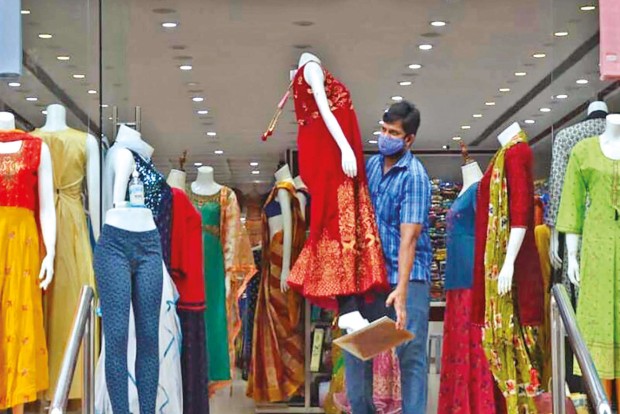Begin typing your search...
Retail back with a vengeance as buyers loosen purse strings
Revenge buying’ is a phrase that one hears often now as the pandemic tapers down. So, it’s no surprise that the festive season will see an uptick in business activity. The rush into malls or the travel bookings are only a few indicators for businesses to reflect on their growth trajectory.

Chennai
E-Commerce has been experiencing a significant upswing owing to increasing number of players across categories, and the pandemic has only accentuated it. From the comfort of their homes, consumers have been vigorously clicking and clocking e-sales. From household items to office stationery and electronics and consumer durables, the websites of mega brands as well as of newer entrants have seen hits multiplying by the minute.
If online sales have seen a surge, shoppers are not missing any opportunity to get out of their homes to “splurge” as well.
A just-out report from TAM Media Research reveals the Tamil Nadu appetite story, as the top ten advertisers include Hindustan Unilever, Reckitt Benckiser, P&G, Brooke Bond Lipton, Colgate Palmolive, Smithkline Beecham, ITC, Cadburys, Shriram Life Insurance and The Chennai Silks Group. What this data signifies is the interest of the buyers or the target audience that companies are focusing upon. From FMCG to insurance to clothing and retail purchases, Tami Nadu seems to have gone into a tizzy.
Toilet soaps, toilet/floor cleaners, tooth pastes, milk beverages, shampoos, washing powders/liquids, paints and life insurance, along with retail outlets such as jewellers figure among the top ten categories that have leveraged the power of television medium, as per the report.
LV Krishnan, CEO, TAM India, has said the analysis of the consumption pattern or the brands that have continued to hold sway in the five southern states only seek to throw light on growth drivers in the region. In fact, five major sectors – auto, retail, e-commerce, durables and FMCG for the south market have been the focal points of the analysis.
Hyper local retail comprising departmental stores, multi-brand outlets, jewellery and silk businesses have been the growth drivers, says AJ Christopher, Co-founder-Director, Sense 9 Solutions. Interestingly, hyper local brands are the flavour of the season, as consumers in this part of the country are giving marquee ones a go by of sorts in TN, the retail mecca.
In a recent interaction, a realty player said post the first lockdown, revenge buying has set the tone of home buys. “Realty as an asset class is perceived to be stable and respectable,” said Arun MN, founder-MD, Casa Grand, as he went on to add that 60 per cent of his Rs 10,000 cr turnover was generated from Chennai and Coimbatore.
KE Raghunathan, Convenor, Consortium of Indian Associations says, “We are getting into the festive mood now. I expect business such as clothing, recreational outing like going out to movies, dining out, travel, amusement parks, temples to do well in the remaining part of this year compared to last year.” These activities reflect the trend and preferences of the lower and middle income families, he sought to point out.
However, he has a word of caution as he believes luxury items such as “gold, new asset creation or non- essential items would be hit badly.” Also, since the unemployment levels have gone up considering the lay-offs or pay cuts or business closure on account of the pandemic, Raghunathan says, bonus may not find their way into the hands of many working people hands. “Job loss, unemployment, savings loss, insecurity and frustration will be felt high,” he seeks to emphasise.
The loss of lives in the second wave of COVID also would dampen the spirit of celebration as those families who have lost a near and dear are yet to come to terms with it.
While this may be the flip side, there is a desperate “need” among people to celebrate. It is a Catch-22 situation for shoppers this festive season. The pull of wish or want has to eventually be matched by resource availability and affordability. Having said that, as Raghunathan points out, “As money is hard to come by, most expenditures would happen with EMI purchases. In particular, the middle income people will realise this EMI burden later on.”
Visit news.dtnext.in to explore our interactive epaper!
Download the DT Next app for more exciting features!
Click here for iOS
Click here for Android
Next Story



